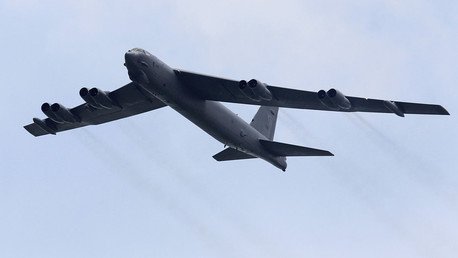Chinese PM calls for direct talks over disputed S. China Sea islands

As tensions over the disputed islands in the South China Sea rise, Southeast Asian nations should resolve their differences and discuss the issue in direct talks, Chinese Premier Li Keqiang said at the ASEAN summit in Malaysia.
“In recent years, the South China Sea disputes, which should have been addressed by directly concerned countries through negotiation and talks, have been played up to become a problem concerning the South China Sea's peace and stability and the freedom of navigation,” Xinhua quoted Li as saying in Kuala Lumpur late Saturday, while addressing the 18th China-ASEAN (10+1) leaders' meeting.
Continuing confrontation “is in nobody's interest,” the Chinese premier said, adding: “Only by expanding our common interests and seeking common ground can we narrow our differences.”
Beijing claims control over most of the South China Sea, which includes most of the sea routes supplying China with energy resources, along with a number of island rich in natural resources. The islands are also claimed by a number of other regional powers: Vietnam, the Philippines, Malaysia, Taiwan and Brunei.
The tensions over these islands have been growing over the last years since China began artificially expanding the territory of these islands to construct airstrips and other military infrastructure.
The US believes China’s actions pose a threat to freedom of navigation in the region and refuses to acknowledge Beijing’s sovereignty over the islands.
Only a week ago, two American B-52 strategic bombers flew near Chinese artificial islands in the South China Sea, ignoring calls to leave the area from Beijing’s aviation authorities. The Pentagon claimed the “routine mission” was in accordance with international treaties.
Beijing continues to insist that there is no problem with freedom of navigation in the South China Sea.
“Freedom of navigation and overflight have never been a problem,” Vice Foreign Minister Liu Zhenmin said during the ASEAN talks with Asia-Pacific leaders.
The Japanese government has expressed support for the US Navy vessels currently patrolling the South China Sea not far from the disputed islands, but said it has no plans to send to the region warships of its own to support the operation.
In late October, the US Navy’s USS Lassen passed through a 12-mile limit around Subi Reef in the Spratly Islands archipelago, claimed by China. The Subi Reef is one of seven that China has artificially reinforced to support its claim on the archipelago and the sea around it.
Beijing protested the USS Lassen’s mission in the South China Sea, accusing the US of escalating tensions in the region.
LISTEN MORE:
"The actions of the US warship have threatened China's sovereignty and security interests, jeopardized the safety of personnel and facilities on the reefs, and damaged regional peace and stability,” the Chinese Foreign Ministry said in a statement.
Later, Chinese Defense Minister Chang Wanquan urged the US not to threaten Beijing’s sovereignty or its security interests in the region.
READ MORE: China warns US against further South China Sea patrols
















